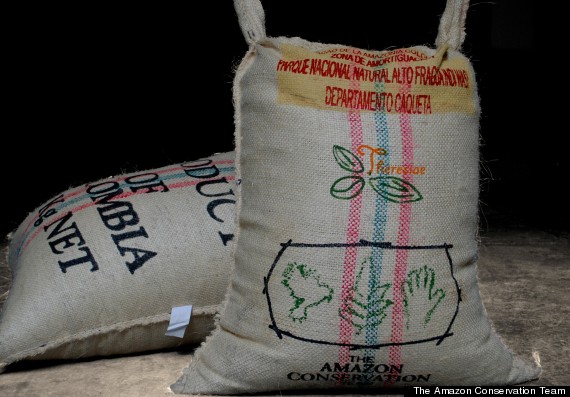For communities in Caquetá, Colombia, growing cacao beans--the main component of chocolate--is one of the few income-generating uses of forest land that does not damage the environment or support illicit industries. People in this region, located amongst the Andean foothills around the Alto Fragua Indi Wasi National Park, are overcoming the well-known challenges of the country, such as environmental degradation, poverty and drug trafficking, through the sustainable generation of the delectable foodstuff which is literally at the heart of Valentine's Day.
While western associations with chocolate include romance, luxury and sensuous pleasure, the meaning is altogether different for these forest communities. Ecological cacao production allows families to eke out a good living on their traditional lands, rather than grow illicit crops or migrate to the city where chances of a better life are miniscule.
We at the Amazon Conservation Team have been working with many small farmer communities, including those in Caquetá, for more than 17 years. For us, chocolate far transcends romance and gustatory gratification--it's about hope.
The department of Caquetá suffers the highest rate of deforestation in Colombia and the second highest in Latin America. The expansion of the agricultural frontier, extensive ranching, mining, petroleum exploration and other inappropriate practices of extraction have been driving deforestation.

As alternatives, many foreign development models have been introduced that ignore the forest structure and the knowledge of local communities. For these reasons, they have been ineffective. With people in need of income, many must migrate to other regions in search of job opportunities. The locals often are forced to sell their services and land to cattle ranchers or to work for oil and mining companies, causing unsustainable land use, deforestation, and increased emission of greenhouse gases. Some even join the drug trade hoping for a cut of the profits.
In these areas, the condition of community infrastructure and public services is sometimes poor or almost nonexistent: most of the villages do not have electricity service or the means to purify water or manage waste. Solving these problems would not only improve the local quality of life, but also allow the development and strengthening of sustainable practices toward the conservation of this important ecosystem and its biodiversity.
The projects we support provide financial incentives to cacao farmers in a way that addresses conservation concerns and encourages the processing of "origin chocolate" of a premium standard from a globally significant ecosystem. The sale of their beans at a premium price can help these communities earn badly needed income and avoid acculturation and poverty as they move to the city. Through this empowerment, they can stay on their ancestral lands and continue their traditional livelihoods.

When I was a kid, Americans basically bought one brand of chocolate bar: Hershey's. A connoisseur could opt for their semi-sweet block, but that was about as wild as it got. Now there are over 35 chocolate products from Hershey's alone, including fair trade and organic selections.
Grocers today seemingly stock more types and brands of chocolate than breakfast cereal, with a cornucopia of ingredients including lavender, crystallized ginger, crushed coffee beans, and cherries. And if you thought chocolate with chile pepper was daring, have you tried it with bacon, curry powder, stout, goat cheese or grasshoppers? Me neither, but many are buying. Like oenophiles in their perpetual quest to find the perfect wine, chocoholics now search far and wide for the ultimate chocolate experience, and this type of fair trade chocolate in increasing part of the selections available. In fact, a report from May 2011 predicted the global chocolate market will grow to $98.3 billion in 2016 from $83.2 billion in 2010. Through our choices as consumers, we can ensure a portion of that comes from sustainable cultivations in the Amazon and other tropical regions. When you're at the store this Valentine's Day, remember the botanist's guide to chocolate: by choosing products that are sustainably grown (and perhaps making a complementary donation to an organization that helps cacao farming communities), your demonstration of caring can go much farther.
